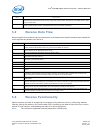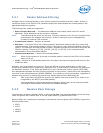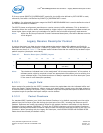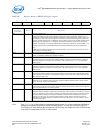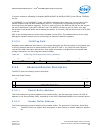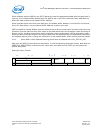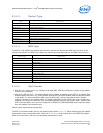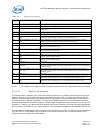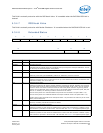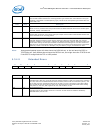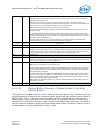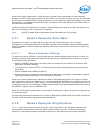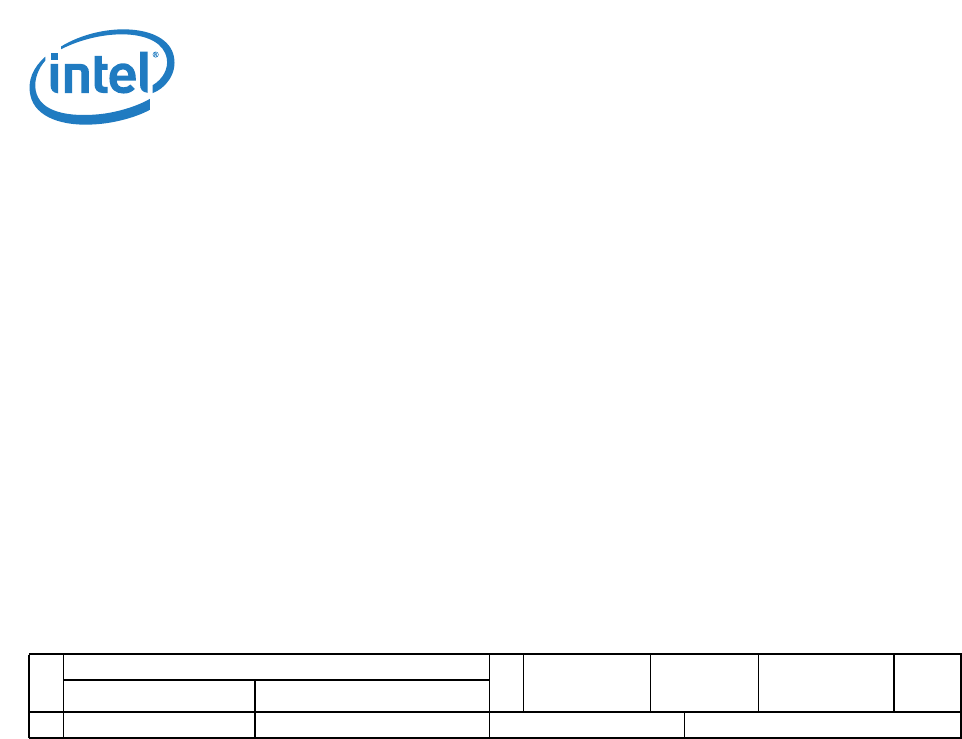
Intel
®
82575EB Gigabit Ethernet Controller — Advanced Receive Descriptors
Intel
®
82575EB Gigabit Ethernet Controller 324632-003
Software Developer’s Manual and EEPROM Guide Revision: 2.1
110 January 2011
When software sets the NSE bit, the 82575 places the received packet associated with this descriptor in
memory at the Packet Buffer Address with the NSE bit set in the PCIe* attribute fields. NSE does not
affect the data written to the Header Buffer Address.
When a packet spans more than one descriptor, the header buffer address is not used for the second,
third, etc. descriptors; only the Packet Buffer Address is used in this case.
NSE is enabled for Packet Buffers that the software device driver knows have not been touched by the
processor since the last time they were used, so the data cannot be in the processor cache and snoop is
always a miss. Avoiding these snoop misses improves system performance. NSE is particularly useful
when the data movement engine is moving the data from the Packet Buffer into application buffers and
the software device driver is using the information in the Header Buffer when working with the packet.
Note: When NSE is used, Relaxed Ordering should also be enabled with CTRL_EXT.RO_DIS.
Each time the 82575 writes back the descriptors, it uses the following descriptor format. Note that the
SRRCTL[n].DESCTYPE bit must be set to a value other than 000b so the 82575 can write back the
special descriptors
Descriptor Write Format:
63 48 47
3
2
31
3
0
21 20 16 15 4 3:0
0 RSS Hash Value
1
1. Mutually exclusive by RXCSUM.PCSD.
S
P
H
Header Buffer
Length
Rsv Packet Type RSS
Type
Packet Checksum
a
IP Identification
a
8 VLANTag Length Extended Error Extended Status



